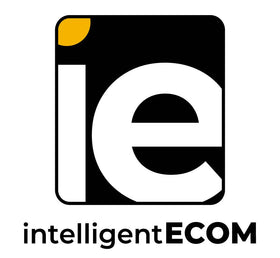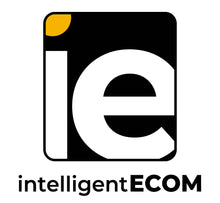When it comes to digital marketing, there's no one-size-fits-all solution. What works for one company might not work for another. That's because each business has a unique customer base with different needs and wants.
The key to success is understanding your customers and targeting them accordingly. This is where customer segmentation comes in.
Read More eCommerce Resources: THE ABSOLUTE GUIDE TO DEMAND GENERATION PRACTICES YOU MUST KNOW IN 2022
What Is Customer Segmentation?

Put simply, customer segmentation is the process of dividing your customer base into smaller, more manageable groups. Your audience can be divided into "easier-to-manage" segments through audience segmentation. This way you can conduct more related campaigns that are also simpler to optimize as compared to using the same marketing strategy for all of your consumers. Your audience will feel more a part of your brand as a result of this. This can be done based on a number of factors, such as age, gender, location, income, or interests.
Once your customer base has been segmented, you can then tailor your marketing strategy to better appeal to each group. You may create different ads, tailored landing pages, or even special offers reserved for specific segments.
Ultimately, customer segmentation can help you boost your digital marketing efforts and achieve better results.
Why Is Customer Segmentation Important?
Digital marketing is all about reaching your target audience with the right message, at the right time. And customer segmentation is one of the most important factors in achieving this.
By dividing your customers into specific groups, you can create tailored marketing messages that resonate with them. You can also use customer data to better understand their needs and desires, and create content and offers that appeal to them.
Ultimately, customer segmentation allows you to create a more effective digital marketing strategy that delivers better results.
Recommended Reading: TOP 7 CUSTOMER RETENTION STRATEGIES TO HOOK YOUR CUSTOMERS

Here are some of the top-notch benefits of creating Customer Segments:
Helps You Prioritize Communication Channels
People communicate in many ways. Some people prefer social media, some may prefer email messages and others may read your marketing collaterals like blogs. If you segment your audience based on their preferred social channels, it can help you channel messages for each of your target types.
Helps You Cut Back on Expenses
By using audience segmentation, you may save time and money by avoiding generic campaigns that don't appeal to your intended audience. You are more likely to help your audience achieve their goals if you are aware of their specific motives. As a result, your chances of marketing failure are reduced.
Helps You Customize Your User Journey
By developing a distinct client profile, audience segmentation enables you to design efficient promotions, development, pricing, and marketing tactics.
Improves Your Competitiveness
You could learn information about your clients that is not known by your rivals. You may send marketing emails to university students, for instance, if you know that it's almost time for them to submit their dissertations and take examinations and that you can help them "de-stress" or study by giving them items or services.
Helps You Target the Right Customer
By focusing on your top prospects, you can reach out to the people you know who would appreciate your product or service rather than taking a one-size-fits-all strategy.
What Are the Different Types of Customer Segmentation?

Here are some crucial areas to consider if you're unsure where to begin when it comes to customer segmentation.
Socioeconomic and Demographic Segmentation
One of the most popular and straightforward methods of customer segmentation is demographic segmentation. At its most fundamental level, demographic segmentation examines age and gender, although socioeconomic elements like family income, marital status, employment or industry, and education (such as if they have a degree level of education) all fall under this segment.
Geographic Division
Geographic segmentation is segmentation based on the customer’s geographic location, typically at the national and city level. Consumer requirements and preferences can differ greatly from city to city, particularly in bigger countries with notably different topographies or economic areas, like the US. For multinational firms, geographic segmentation is very helpful in defining the subtle differences in customer wants across different countries and in identifying any cultural traits that may be included in their targeting approach.
Previous Purchase History
Since you will be interacting with various groups of individuals differently depending on the relationships you have previously established, you should segregate your existing customers from new customers. To do this, you may distinguish your groups depending on their shopping habits and even the things they tend to buy. Predicting their future requirements will be crucial if you want to be able to provide them with what they need before they even recognize it themselves.
Major Social Channels
In order to effectively sell your products and services to a diverse audience, it may be quite helpful to understand how and where people are accessing your information. It might reveal their preferences for many things as well as how they get along with their pals. The two go hand-in-hand in a number of ways when you are developing a plan since there are several ways you can utilize your social media platforms to target.
Psychographic Segmentation
On occasion, businesses divide up their audience based on certain characteristics, cultural norms, or way of life. These could potentially be relevant to recent occasions. Because it's not necessarily in the form of specific data like age or regional segmentation, which are distinct and tangible sets of information, this sort of segmentation can be challenging to identify. It could have more to do with lifestyle choices, tastes, or ideals. Marketers must delve a little further in order to understand psychographics. Things like Facebook polls and quizzes may be quite effective in this regard.
What Are Some Best Practices for Customer Segmentation and Targeting?
Here are a few best practices to keep in mind when doing customer segmentation and targeting:
Know Your Customer
The first step in doing customer segmentation is to know your customers. This can be done through surveys, focus groups, or in-depth interviews with existing customers.
Focus on Transactional Data
The next step is to focus on transactional data. This includes data that's directly related to a transaction (such as purchase history) as well as data that may be tied to a purchase (such as demographics).
Look at Non-Transactional Data
Look for additional signals that can help you understand your customers' needs and interests, including social media interactions, website visits and other non-transactional activities like brand advocacy or word of mouth marketing.
Use Predictive Analytics
Predictive analytics tools can help you make more informed decisions about who buys from you and how they might respond to different offers or promotions. You can use them to predict likely purchases based on past behaviors and preferences by analyzing patterns in transactional data and non-transactional information such as social media activity or search engine queries using machine learning algorithms like A/B testing software or natural language processing (NLP) software like sentiment analysis software (which analyzes text messages sent between people).

Here's an update you shouldn't miss: SAY GOOD-BYE TO UNIVERSAL ANALYTICS & HELLO TO GOOGLE ANALYTICS 4
Look at Competitor Strategies
Competitors can provide valuable insights into how your target demographic behaves. By looking at how competitors segment their audience, you can learn what types of content resonate with potential customers. You may discover that one company does a better job than another at capturing the attention of your target audience with relevant content. This will help you decide on the best approach for your own business.
Understand the Market
Once you have determined who your customer is, it’s important to understand the market they live in and how they interact with products and services offered by other companies in that market space. The more you know about your customer’s needs and wants, the easier it will be to develop targeted marketing campaigns that resonate with them.
Relevant Reading: 8 CONVERSION RATE OPTIMIZATION STRATEGIES TO LEVERAGE YOUR ROI
Some Customer Segmentation StatisticsYou Must Know
-
With the majority of people preferring highly personalized communications from the brand, segmented, triggered, and targeted campaigns bring in 77% of marketing ROI.
-
Segmentation makes firms 60% more likely to understand customers’ challenges and concerns and 130% more likely to know their intentions.
-
Segmenting based on personas provides 90% of firms with better knowledge about their audience. And 82% of firms using personas have come up with an improved value proposition.
-
49% of participants stated that they purchased something on impulse as it was presented to them with a personalized message.
Build Your Buyer Persona & Create Targeted Campaigns
A clear understanding of your customers is the first step in effective customer segmentation. To accomplish this, you need to look at current and potential customers.
What are their needs and wants?
What are their behaviors?
Who are they?
No marketer can afford to overlook the importance of customer segmentation. By dividing your customer base into specific groups, you can create a more targeted marketing strategy that will resonate better with your audience.
Not sure where to start?
At eComIntegrate, we help you build stellar digital marketing tactics based on your buyer persona. Get in touch with us right now to start your customer segmentation journey.
[nerdy-form:11564]






Leave a comment